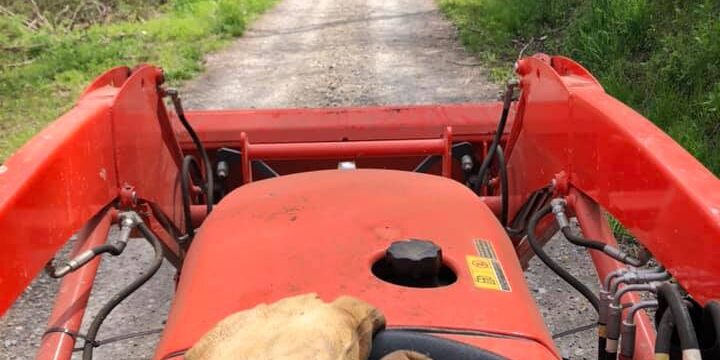Recently, I was honored to be a guest on friends’ podcast (Habitat Podcast). As we meandered our way through a series of topics, we found ourselves (through my ramblings), comparing Habitat vs. Hunting, and how these are not always so closely related. I made the seemingly bold statement that they are, “polar opposite of one another.” As I thought over this topic, I found myself wanting to further articulate the meaning behind my statement, and I have taken to writing in an effort to clearly explain
my logic.
I must say, I blame Aldo Leopold for my deeper than usual thought analysis. I have recently finished “A Sand County Almanac,” and it is truly a life-changing, mind enlightening book.
Hunting is a drive in many of us. Some might even define the drive as an inherent trait in man. As whitetail hunters, we spend an exorbitant amount of time scouting, planning, hunting, and hopefully dragging, if all goes well. We all chase these deer for our own reasons but we can assume that a big antlered buck and freezer full of fresh venison has never upset any deer hunter.
As we look at the seasonality of a deer season, we can recognize that many of the steps we take to harvest a mature buck are directly correlated to a specific action, within a specific duration – often a single deer season. For example, hanging a tree stand on a worn-down deer trail. We are doing this single action in the hopes of creating a reaction. The optimal reaction, in this case, is a deer following the trail right past our stand, allowing a shot opportunity. Without us taking that first action- hanging the stand- the shot opportunity cannot occur at that location and time.
These types of situations can be mimicked in various hunting situations. When we harvest a buck, we immediately start taking pictures and celebrating the harvest. As the excitement wears off, (often faster than we anticipated it would) we are on to planning our next hunt, for the next season. One must note that the seasonality of a hunter’s lifestyle in which he lives and breathes is far more exaggerated than the societal norms of non-hunters.
As hunters, many of the decisions we make are focused on the next hunt, the next season; but not much more prolonged than that. Hence, this is one of the areas that drive a cleavage between the similarities of hunting and habitat improvements.
Habitat Improvement
To be clear, habitat improvement can be addictive and one should expect to lose sleep at night worrying about herbicide applications and the upcoming weather forecast if they do find themselves involved with this passion.
Habitat improvement is exactly as it sounds – working to better your biota (habitat) on a given farm or property to offer overall better wildlife, often with a specific interest. In many cases, whitetails. Habitat improvement projects often start the same in most deer hunters’ minds- food plots. Everyone (myself included) loves food plots and adding food to a deer’s’ diet. Food plots are a lot of fun and probably the attributable factor for me wanting to learn more about conservation. When a food plot is put in with the sole goal to kill a deer over it, that is a decision based on the hunter seasonality mindset. However, when a food plot is put in with the goal of correcting pH, increasing organic matter, decreasing the need for herbicides, benefiting pollinators, decreasing reliance on synthetic fertilizers, etc.; those are decisions that are being made by a habitat improvement mindset. Although at the macro level they appear the same, at the micro level, they are vastly different approaches.
Let us look at planting trees for wildlife. A hunter might be interested in the white oak that is dropping during the deer season or the sawtooth oak he can plant to create the fastest producing oak possible. The habitat manager is more interested in planting the native oak species, even though he might not know its shade in his lifetime, or harvest a mature buck eating acorn during a great mast year.
Another example, (this one can be a touchy subject) is invasive species removal. Often, the hunter might say that a given invasive is “great bedding” or even used as a steady food source for their local deer. The hunter mindset might not want to remove that cover, or food, as it would potentially change the deer or even push a deer to a neighbor. This mindset is not wrong. It has validity, but it is a short-term focused mindset.
The habitat manager does not care about a season or two. The habitat manager recognizes that clearing a 5-acre autumn olive thicket might be followed by a native grass field, then by blackberry brambles, pokeweed, ragweed and other natives, and eventually hardwood saplings (someday our grandkids might sit under those oaks). Every level of this succession takes several years and in some cases a lifetime to see through to completion. Every step of this process is providing far more food, cover, and value for the wildlife than any monoculture of an invasive would. The removal of this invasive has also slowed the exponential spread of them; not only benefiting your land but the surrounding properties, as well!
I am an avid sportsman and hunter. I love hunting mature whitetails. If I could pick to go on one hunt in the entire world, 99% of the time I would simply pick to go to the farm and hunt for a week with good company. Not one part of this post is meant to drive a wedge between hunters and habitat managers. Actually, my goal is to do the opposite. Habitat managers can learn from those who are more of a hunter mindset, and the hunter mindset might just find some of the longer-term focused ideas beneficial on their property.
As humans, if we cannot clearly define which side of the fence we are on, or even recognize that there is a fence at all, it is harder to understand how to work together. My goal with this write-up is to make us more self-aware of where we fall on this spectrum and how we can all better work together- for both better habitat for all wildlife, and whitetails.
If tomorrow we plant 10 apple trees, they might not be great to hunt over next season or even the following. However, someday that orchard will provide habitat for bees, structure for soil, food for deer, and if all things go as planned, fresh venison for the hybrid hunter/habitat manager. To achieve this goal, one must exhibit patience, perseverance, and give back to the land, so he can eventually enjoy the spoils.
“There are two spiritual dangers in not owning a farm. One is the danger of supposing that breakfast comes from the grocery, and the other that heat comes from the furnace.”
― Aldo Leopold
One acre, plant, and tree at a time!
Thanks for reading – Albert Tomechko


